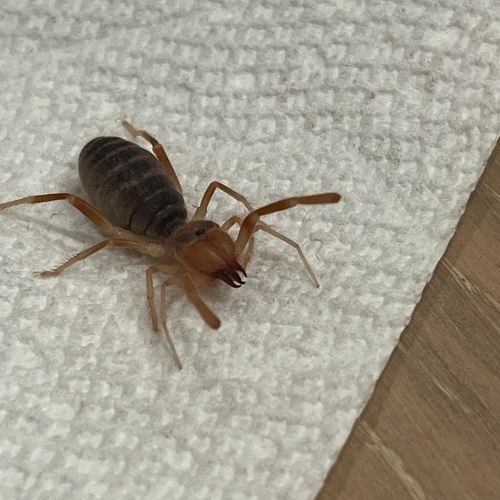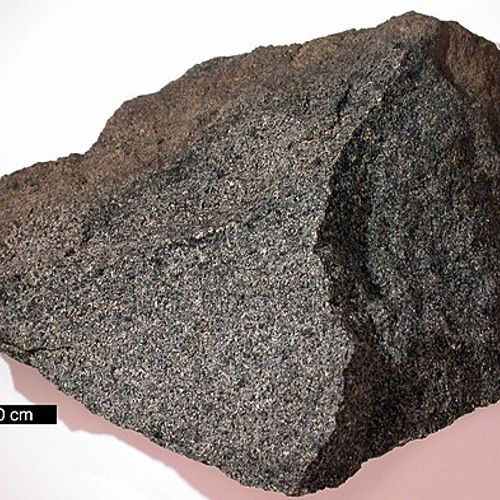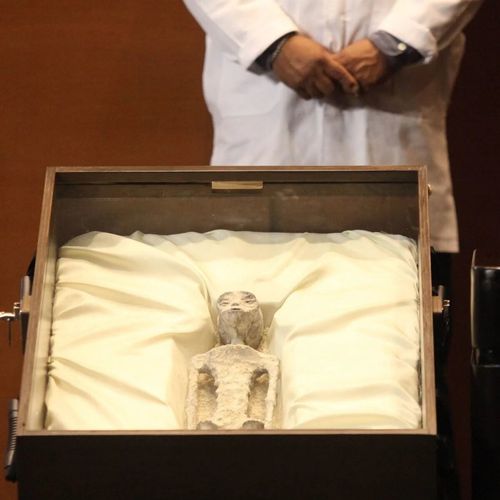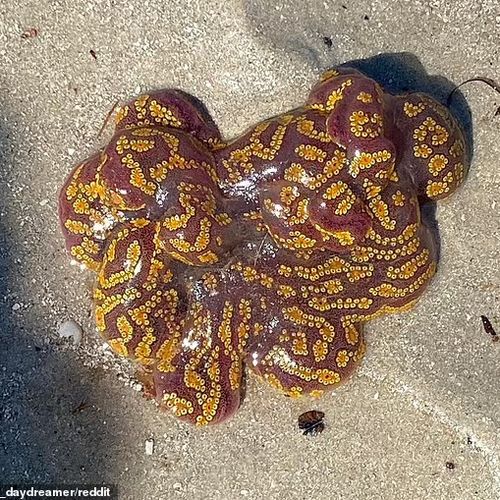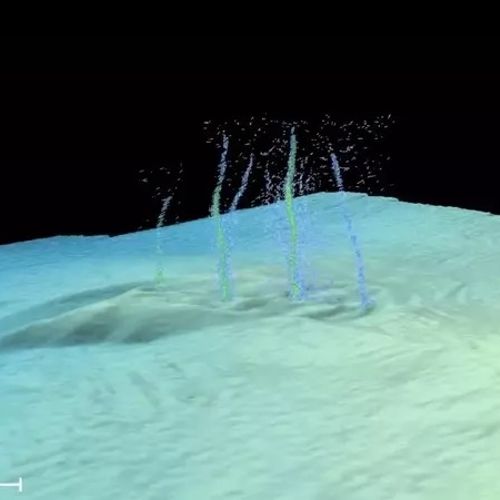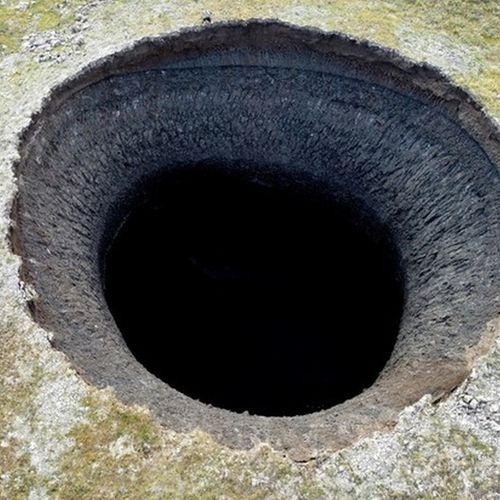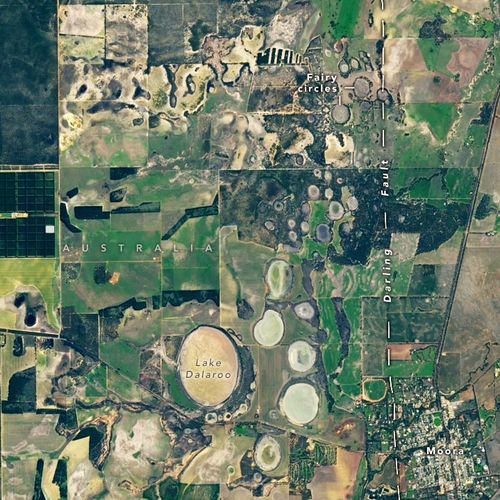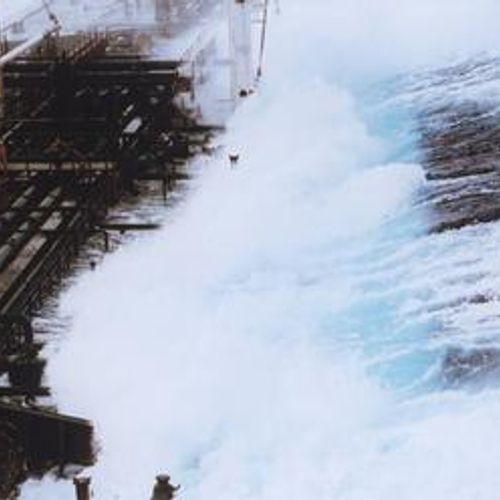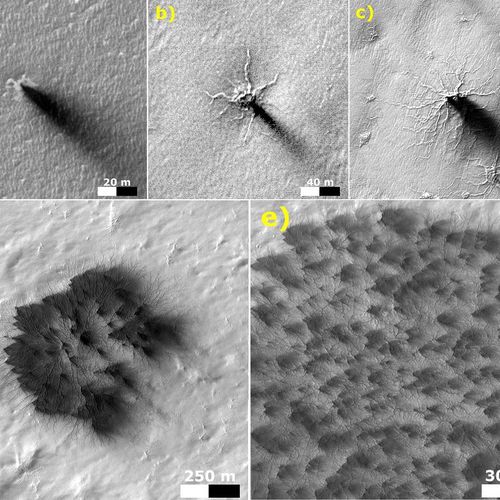
| Added | Fri, 26/04/2024 |
| Источники | |
| Дата публикации | Wed, 21/12/2016
|
| Феномены | |
| Версии |
The study was published in the journal Scientific Reports, and Live Science tells about it briefly. We are talking about giant figures on the surface of Mars, which resemble spiders in their shape. Their sizes sometimes reach one kilometer.
For example, on May 13, 2018, the Mars Reconnaissance Orbiter captured such structures at the south pole of Mars. Perhaps this is the clearest picture of the "spiders" today. The mystery of the origin of these mysterious structures has been haunting scientists for about 20 years. None of the hypotheses put forward earlier has been recognized as reliable - until now.
Surprisingly, scientists found the answer on Earth, and the hypothesis put forward in 2003 that spider-like figures on the surface could be traces of carbon dioxide vapor escaping from cracks in the polar ice was experimentally confirmed.
To confirm or refute this idea, the scientists decided to recreate a smaller version of the "spiders" in the laboratory. To do this, they took a plate of carbon dioxide ice, known as dry ice. Then they turned on a specially designed machine that simulates the Martian atmosphere. The Martian soil was also simulated.
During the experiments, scientists using a manipulator resembling a cancer claw repeatedly raised and lowered plates of cold ice to the ground and recorded: when the cold ice came into contact with a much warmer layer of "Martian soil", part of the ice instantly changed from solid to gas.
This process is widespread on Earth, it is called sublimation. Experiments have proved that the result of sublimation in this case is precisely the spider-like cracks through which gas seeps through the ice.
"This study represents the first set of empirical evidence for a surface process that is thought to be altering the polar landscape on Mars," study lead author, planetary scientist Lauren McCown, said in a statement. "The experiments directly show that the spider-like patterns that we observe on Mars from orbit can be cut out by directly converting dry ice from a solid state to a gaseous one."
It is believed that the Martian atmosphere is more than 95 percent carbon dioxide and that most of the ice and frost that form around the poles of the planet in winter also consists of it. In the above-mentioned 2003 study, it was hypothesized that "spiders" on Mars can form in the spring, when sunlight penetrates through a translucent layer of carbon dioxide ice and heats the soil beneath it.
Scientists then suggested that heating causes sublimation. As a result, the pressure under the ice increases until the ice begins to crack. The gas accumulated below exits through cracks in the form of a flowing plume, leaving behind bizarre patterns resembling spiders.
Until recently, scientists had no opportunity to test this hypothesis on Earth, because the atmospheric conditions of our planet are significantly different from those of Mars. The only way to solve this problem was to recreate the conditions of the Red Planet in the laboratory. It took a lot of time, effort and money.
As a result, the so-called Mars simulation camera was developed, inside which it was possible to create a small "piece" of the Red Planet. Experiments have confirmed that the sublimation hypothesis is correct. It should be noted that planetary scientists experimented with conditions, in particular, they changed the grain sizes of the "Martian" soil.
But in all cases, regardless of the size of these grains, sublimation began immediately upon contact of dry ice with them, and the escaping gas was pushed upward, forming "spider legs". According to the researchers, these legs branched much more strongly when the grains were smaller, and much less when the grains were larger.
Новости со схожими феноменами
Новости со схожими версиями
Log in or register to post comments

